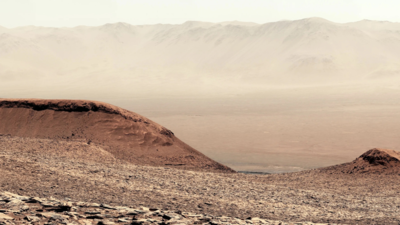
At first glance, this panoramic view might resemble a sunlit desert in the American Southwest, with quiet ridges, earthy tones, and distant peaks. But look closer: you're actually seeing Mars. Captured by NASA’s Curiosity rover from the slopes of the three-mile-high Mount Sharp inside Gale Crater, this surreal landscape is part of a stunning 30-second video showing what the Red Planet looks like up close. What seems like mountain ranges is actually the rim of an ancient crater, created billions of years ago by a massive asteroid impact. It’s the next best thing to hiking Mars without a spacesuit.
NASA shares Earth like visuals from Mars
The panoramic video was captured earlier this year while Curiosity explored a region known as the sulfate-bearing unit. Rich in salty minerals likely left behind by evaporating streams and ponds, the terrain provides a window into Mars' past, when water was more abundant and the climate was more Earth-like. These features help scientists understand how Mars transformed from a potentially habitable world into a frozen desert.
NASA’s Curiosity Rover’s track record
Curiosity, which launched in 2011 and landed in 2012, has traveled over 352 million miles. That includes about 20 miles rumbling over Martian soil. Last year, its wheels uncovered a surprise: pure elemental sulfur, a substance that on Earth is often linked to volcanic activity or even microbial life. This unexpected discovery continues to fuel scientific curiosity about the planet’s potential to have once supported life.
Curiosity’s next stop to 'Boxwork'
Curiosity’s next stop is a strange terrain called “boxwork,” where mineral ridges form web-like patterns across the ground. Scientists think this region formed when the last trickles of Martian water deposited minerals in rock cracks. These formations may hold clues about the planet’s last habitable phases and possibly about ancient microbial life.
More than just a drive
Although Curiosity is not expected to reach the boxwork until late fall, the rover’s team continues to pause and study the fascinating geology along the way. As planetary geologist Catherine O'Connell-Cooper puts it, "We’re not just speeding past the cool things." Each stop offers new scientific insights and spectacular views from 140 million miles away.

 3 weeks ago
136
3 weeks ago
136




























 English (US)
English (US)